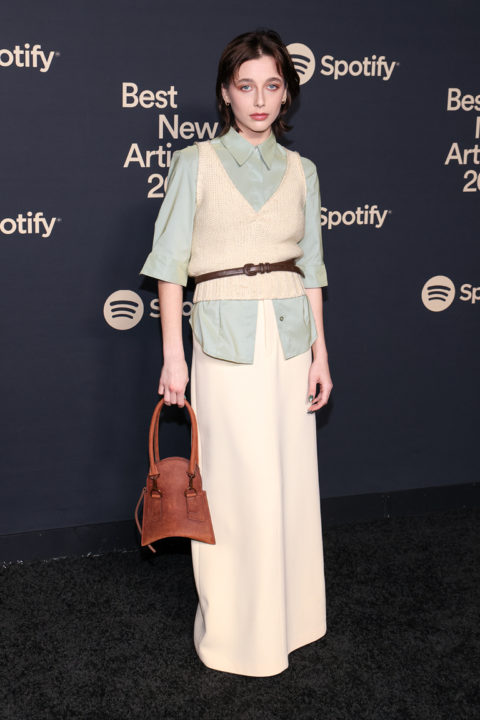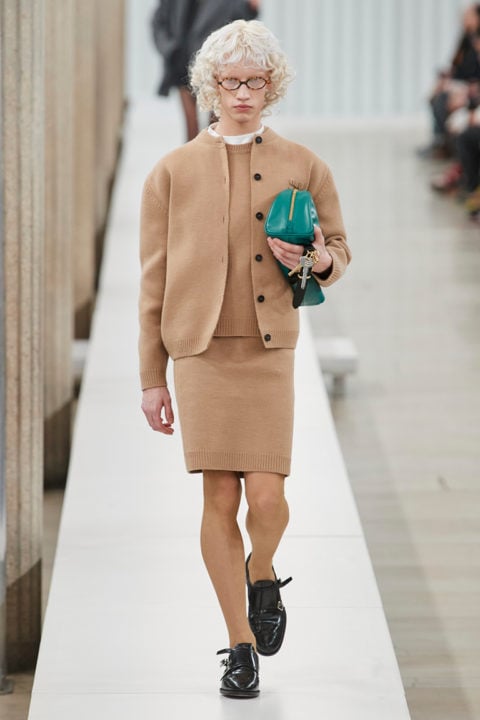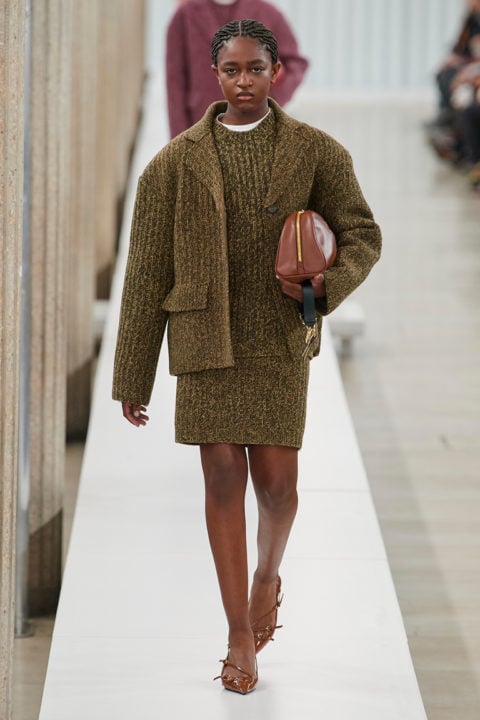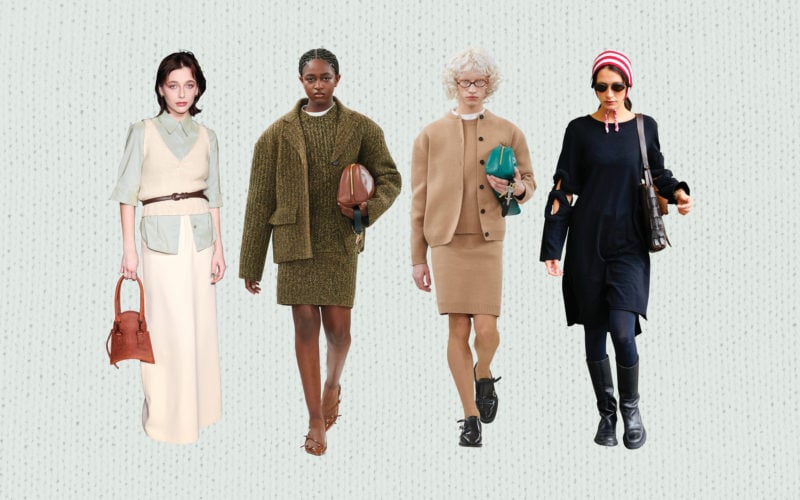The #Grandmacore aesthetic is everywhere from reels to runways. So why are older people still excluded from fashion and beauty spaces?
At 24 years old, I think about aging a lot. I know, it sounds ridiculous. Retinoids and smoothing serums populate my bathroom counter. I find myself researching stages of collagen loss. When analyzing my own reflection, I can’t help but fixate on signs of skin maturation, like my darkened undereyes and the increasingly visible veins in my legs. Trust me, I don’t want to be this way. But can you blame me?
Anti-aging is the most enduring beauty standard there is. And when we talk about inclusivity in fashion, older people are often the forgotten frontier. “People want to stay young because that’s the time when you can pursue your dreams and plan your future,” explains Lixia Yang, a psychology professor at Toronto Metropolitan University who specializes in aging and culture. “When we age, we sense that time might be limited.” There’s a notion that when you reach a certain point in life, you must stick to neutral tones, adhere to “flattering” silhouettes and opt for modest tailoring. Aging is positioned as something bad that happens, especially in appearance-based industries. And lately, this pervasive attitude has been cropping up in more unexpected ways.

On TikTok, the #GrandmaCore hashtag has over 200 million views. This sartorial aesthetic, which began gaining popularity in 2021, emphasizes matronliness, featuring sensible shoes, knee-length skirts and eclectic pattern mixing. It’s been championed by It girls Bella Hadid and Emma Chamberlain, for whom mini-dresses take a back seat to hiked-up socks and chunky knits. And it has even infiltrated high fashion. Arguably the most viral Fall 2023 runway show was Miu Miu, which wholeheartedly embraced grandmacore. Models paraded down an elevated catwalk in buttoned-up cardigans and kitten heels and with functional handbags in the crooks of their elbows. Messy hair and archetypal “granny glasses” completed nearly every look. Noticeably, though, these older oeuvres were presented on youthful, conventionally beautiful models.
A few months later, TikTok’s “aging” filter took hold of the internet. Garnering over 10 billion views, the AI effect predicts what users might look like years down the line by reflecting back faces with sagged cheeks, thinned lips and fine lines. First, it was met with panic, prompting intensified skincare regimens and advice on preventive procedures. Then, attitudes shifted and young people began using the effect to come to terms with growing old. But even this hopeful turn felt disingenuous — because it seems wrinkles are only celebrated when they come in a filter you can remove. And that’s not age acceptance; it’s ageism.

“Society has this widespread ageism: People view older adults as less capable, as lacking energy, as slower,” Yang explains. This stereotype fosters a cultural fear of getting old — and that’s where the “anti-aging solution” comes in. As journalist Jessica DeFino argues in her newsletter The Unpublishable, the beauty-industry tag line is a construct intended to sell us youth-preserving products. And because it’s literally impossible to reverse time, we stay customers for life. Case in point: The “anti-aging” market is reportedly valued at approximately $85 billion and growing steadily. “Shame + fear + (false) hope for a solution = a thriving industry,” DeFino writes. In the fashion space, this rhetoric lives on in the lack of age diversity seen on runways. When we do see it, it’s usually a guest-star celebrity from another industry or a super from the ’90s. Meanwhile, it’s much harder for mature models to make a name for themselves compared to adolescent up-and-comers. This discrepancy seems to be getting worse, with The Guardian reporting a post-pandemic decline in runway jobs for older talents. Grandmacore doesn’t challenge that — and therein lies the problem.

We’re living in a time of aging dichotomy, where the idea of embracing elders is frivolously floated but not truly practised. Kim Kardashian eschewed the term “anti-aging” when marketing her skincare line SKKN but told The New York Times she would “eat poop” to look younger. Last spring, the internet praised Martha Stewart for gracing the cover of Sports Illustrated at 81, but much of the fanfare was over the fact that she doesn’t look like a typical octogenarian. Viola Davis, Jane Fonda and Helen Mirren are part of a refreshing movement of older beauty-brand ambassadors, but in 2021, CNN reported a trend of teens being worried about wrinkles. (Hence my quarter-life concerns.)
And even though grandmacore brings elderly emblems to fashion, it insinuates that all grandmothers dress a certain way. To Dianne Gouveia and Karian Nicholas, this idea is insulting. The content creators — ages 60 and 55 — run a popular fashion blog called “50sfine.” Donning bold hues, curve-accentuating silhouettes and skin-baring cut-outs, they aim to show that fashion has no age limit. In their view, grandmacore isn’t inspiring; it’s othering. “I don’t feel as if it’s got anything to do with including elders,” says Nicholas. “It’s a trend.”

The thing is, although the zeitgeist glamorizes certain older visuals, it overwhelmingly glorifies youth. Take the repetitive roster of internet-born styles: Tomato Girl for Mediterranean vacationwear, Vanilla Girl for cozy neutrals and Clean Girl for light-makeup looks. Through their names alone (“girl” instead of “woman”), these fads are inherently infantilizing. By default, they imply that older people cannot be fully fashionable. But Gouveia argues that later in life is actually one of the best times to craft a personal style. Look no further than 102-year-old icon Iris Apfel, whose decades-in-the-making signatures ooze originality. With her bright aesthetic and abundant accessorizing, the world-renowned creative is a living reminder that self-expression only flourishes with time. As Gouveia puts it, “There’s no need to go into your old age feeling unseen.”
Ultimately, fear of aging is not only prejudice toward older people; it’s discrimination against your future self. In my day to day, I’m trying to rephrase marks of getting older as badges of honour. If I’m lucky, I’ll continue to see my experiences etched onto my skin and my sense of expression evolve. More and more, I’m learning that the passage of time is something to celebrate, not something to fear. When will fashion catch on to that?
This article first appeared in FASHION’s November 2023 issue. Find out more here.
